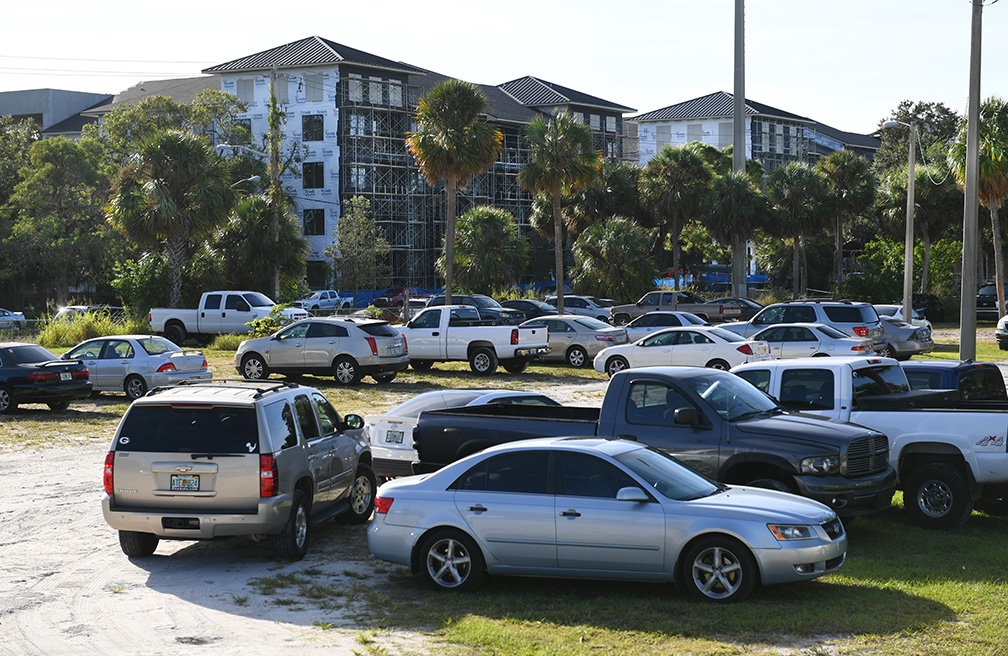POTENTIAL COUNTERTREND
The Rosemary District
'Lofts on Lemon' project might diversify the income mix downtown
By Barbara Peters Smith
barbara.smith@heraldtribune.com
In a county where neighborhood segregation by income, race and even age carries something like the force of natural law, the busy urban experiment unfolding just north of downtown Sarasota — named the Rosemary District after its 19th century cemetery — is poised to break a few local laws, or at least bend them.
The site of Sarasota’s original African-American enclaves, this area encompassing Fruitville Road to 10th Street and Orange Avenue to the Tamiami Trail is shaping up as the sort of lively urban environment that offers something for everyone — from the folks in penthouse condos to the people on the streets. In short, it’s the kind of neighborhood Sarasota County has never seen, where clients from the Salvation Army can mingle with shoppers from Whole Foods. And it could, some say, serve as a vibrant bridge from the downtown core through residential areas all the way to Newtown.

“If we can connect downtown to Rosemary, that place will take off,” predicts restaurateur and philanthropist Steve Seidensticker. “It can’t be as homogeneous as it once was. I think you’re going to really see Newtown take on a life of its own, as a foodcentric, really involved, cool area.”
But that cool factor may already be working against the housing needs of many Sarasota County families and singles. Tripling the allowed density in the Rosemary District to meet demand has resulted in a flurry of construction, all right. But — absent any clear requirement for affordable units — the promise of studio apartments renting for less than $600 a month has morphed into a reality where the entry level for aspiring Rosemary hipsters is more like double that amount.
With its proximity to employment and empty lots that used to be industrial, this is exactly the kind of area where workforce housing dollars can be optimized, says Dustin C. Read, an assistant professor of real estate and property management at Virginia Tech who studies the relationship between public policy and real estate markets.
“People make housing decisions based on housing costs plus the transportation costs, so these infill projects perform a lot better,” Read says. “The way affordable housing policy is moving at the local level is toward an urban revitalization strategy. You’re fighting urban sprawl and providing easier access to work.”
Read’s description sounds like an endorsement for Lofts on Lemon, which — unlike other local workforce housing projects that seem to be hitting stucco walls — is displaying the kind of momentum that could translate into brand new homes for service employees.
This concept for 88 or more units on three acres at Lemon Avenue and Ninth Street, with rents below the market rate, got a unanimous $3 million endorsement from the Sarasota City Commission this month.
“It’s free land in the urban core — land that has already been used for affordable housing,” says William Russell, CEO of the Sarasota Housing Authority. “I think the timing of it is unique. We had this vacant land in a sleepy little underdeveloped enclave in the urban core, and all of a sudden it’s become pretty unaffordable.”
Assembling the necessary public and philanthropic funding will not be easy, he says, but with other projects finished or underway, the Housing Authority will be able to make Lofts on Lemon its priority. At least one commissioner, Hagen Brody, is firmly backing the plan, and Russell is observing signals of community support.
“We’re building six hotels downtown,” Russell adds. “Think about all the service employees — where are they going to live? All these forces and events are occurring around us that make this project even more needed.”
The idea is for a mix of subsidized and income-adjusted rentals, with tenants who earn 100 percent of the median annual income helping to keep the project afloat. Half an acre would be set aside for a city park. This integration with the surrounding neighborhood comes of learning from past mistakes, Russell explains.
“The old public housing model was kind of a failed social policy,” he says. “It concentrated extremely low-income families and segregated them, oftentimes physically isolated them. That happened all over the country. Today, we’re saying let’s keep it affordable, but let’s do a mix of incomes, to keep it financially viable in the future, and also socially viable.”
Could Lofts on Lemon be the kind of catalyst that changes Sarasota County’s approach to workforce housing? Russell has spent enough years trying to crack this nut that his optimism comes heavily laced with caution. And yet ...
“I think it could,” he says. “I would hope that once it’s built, it will be something we’re really proud of.”